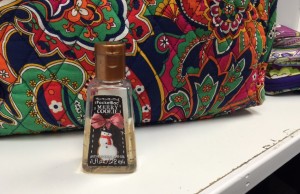You’ve just finished dissecting an owl pellet in anatomy class when the lunch bell rings. It’s quesadilla day and your stomach growls in anticipation. Instead of wasting time running to the bathroom to wash your hands, you take out your trusty hand sanitizer and lather your hands in ethyl alcohol in hopes to kill “99.99%” of the germs.
And then you wonder why your quesadilla tastes like ethyl alcohol.
And owl pellets.
One of today’s most common misconceptions is that hand sanitizer is more effective than good ole’ fashioned soap and water.
Though hand sanitizer is a better alternative if soap and water is unavailable, hand sanitizer is not always effective in lowering resistance to illness and can even cause harm due to the chemicals it contains.
Triclosan is a major ingredient in hand sanitizers and other cleaning products. It’s purpose is to prevent “bacterial contamination” according to fda.gov but there is no evidence that it can actually prevents illness and infections.
Dr. Ana Bowen, a medical epidemiologist at The Centers for Disease Control and Prevention said according to cnn,com that “Triclosan-containing products don’t provide any disease protection beyond what you get from washing with soap and water.”
Cnn.com also says that trcilosan can disrupt the endocrine system and harm the immune system.
This supposedly helpful ingredient has been shown to contribute to bacterial resistance of antibiotics.

Before eating a meal is also another common time for people to use hand sanitizers. Before diving into the quesadilla you’ve waited all week for, take a second to remember the chemicals you lathered all over your hands before you take a bite. Using hand sanitizer provides no guarantee that your hands will be free of the day’s germs.
Also, hand sanitizer is not effective when the hands of the user contain substances like food and water. For these reasons, hand sanitizers are not allowed to be used in place of handwashing in food service settings.
Many students at Woodland Regional High School, however, use hand sanitizer despite uncertainty of its effectiveness.
While Junior Krista DeTulio does not believe the use of hand sanitizer can replace handwashing she does believe it succeeds in killing germs and finds it convenient in certain situations.
“I usually use it [hand sanitizer] after eating or in the car after I go to a store,” said DeTulio.
Tyler Orloski, Junior, agrees with DeTulio and uses hand sanitizer in hopes of killing common germs.
“When I use hand sanitizer, I just feel like I won’t catch anything so easily,” said Orloski. “Even though people say that overusing it lowers your tolerance, which I understand, I view it as killing the germs before they get to you.”
Kaylee Walsh, sophomore, believes hand sanitizer is a quick way to kill germs especially in setting such as a hospital.
“Hand sanitizer is definitely more effective and easy to use,” said Walsh. “In the hospital it’s very effective because it takes a couple seconds to go a long way and help out the patients.
Though the debate over the true effectiveness of hand sanitizer continues, handwashing takes approximately 20 seconds and will better ensure that your hands will be left germ free.



















